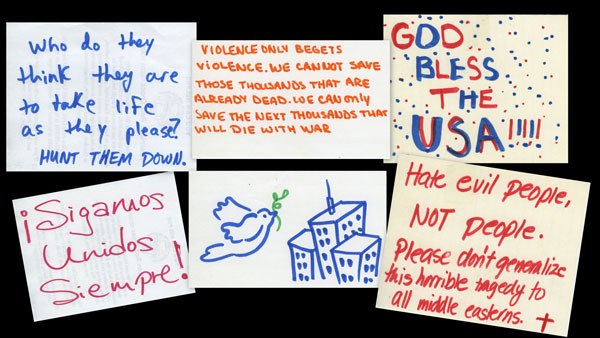On Tuesday, September 11, 2001, nineteen hijackers took control of four passenger airliners in a coordinated suicide attack against the United States. In total, almost 3,000 people died, including 227 civilians and 19 hijackers aboard the four planes. Across the nation, immediate responses included mixtures of horror, fear, anger, and sorrow.
Shortly after September 11, the Illini Union provided a space for the University community to express their thoughts about the event. They hoped to promote dialogue in a civil and supportive atmosphere for the entire campus. Less than a month later, this collection made its way to the University Archives.
This compilation of papers gives insight into the thoughts and emotions of the campus community during a historic national tragedy. Below are six of hundreds of slips of paper now housed at the Archives Research Center.[1]
Note: the views expressed do not necessarily reflect the opinions of the author or the University Archives.
[1] Reflections on September 11, 2001 Disasters, Record Series 37/7/4, University of Illinois Archives.

